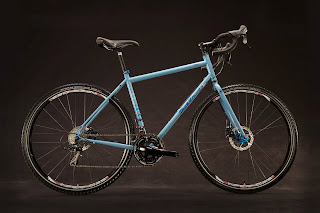I had a chance to test ride a bicycle with Bionx electric system. Oh boy, it's fun! But, let me start at the beginning...
I am not planning on adding an electric assist to any of my current bicycles although those hills in my neighborhood are still bothering me. Arlington, MA is a hilly place. The town is located on two large hills with Massachusetts Ave and the town center sitting in a valley between them. Unfortunately, I live on the top of one of those hills. This presents a problem. Any errands I would like to run car-free, involve walking or biking down the hill to the town center and then back uphill, with my son in a stroller and a backpack full of groceries. It just doesn't work. No wonder I never see my neighbors walking.
A bicycle doesn't really solve this problem at all. Riding down the hill on an empty bike with my son on the back seat is obviously not a problem. Riding back uphill on a bike loaded with groceries often seems impossible. Sometimes, in such situations I really wish there was an invisible hand to push me forward. Bionx PL350HT DT L system can work exactly this way.
The bicycle I rode was a fairly typical mountain bike (29er), equipped with a 350W rear wheel Bionx motor, 9-speed freewheel, Bionx downtube battery, a handlebar console and a throttle. The entire systems costs around $1700 and adds nearly 20lbs (9kg) to the weight of your bike. Yes, it's not lightweight, but I don't see it as a problem. It roughly compares to riding with two 1-gal jugs of water attached to the bike. Unless you are racing, you will not notice this much (Not that you would ever want to put Bionx system on a racing bike).
All I could do, was just a short ride around the block so I can't claim to fully test the system, but even that short ride gives me an impression of what Bionx can do. And in terms of performance, the system is simply amazing. There are 4 levels of assistance, adjustable with "+/-" buttons on the throttle. At level 1 and 2 the assist is barely noticeable when riding on a leveled street. Level 3 gives a significant speed boost and level 4 is just plain crazy. It seems to be an equivalent of the "red button mode". Yes, there is a separate red button on the throttle that has to be pressed and held for a quick, strong power boost. I picture this could be very handy when starting at the green light on a heavy, loaded bike or riding up a short, steep hill. But there were no hills in the place where I rode the Bionx bike so after switching to level 4 or pushing the red button, the bike was accelerating so quickly that I had to pull the brake levers in order to maintain control. So, be careful with the red button.
But that's not all. Bionx system comes also with 4 "negative" assist levels, or braking modes. When switched to a braking mode the motor recharges the battery, at a cost of pedal effort. Again, this thing is powerful! On a leveled street, I could tell it was clearly harder to pedal in regenerative modes 1 and 2. Mode 3 slowed me down to a crawl and mode 4... I don't know how to describe it. I think it compares to riding up the hill in a too-high gear while pulling a trailer. Obviously, you wouldn't want to ride your bike in those modes normally. But if you find yourself riding down a steep hill, why not just slow down, let the motor do the braking and recharge the battery at the same time?
One more question I wanted to have answered was how much extra drag the non-powered Bionx motor adds to pedaling effort. In other words, if the battery dies (or the system is simply turned off) would it be much harder to pedal because of the internal resistance of magnets in the Bionx motor? Fortunately, I found out that this is not the case. Riding with the system turned off didn't seem to make a difference. Yes, bike is heavier, but it's not much harder to pedal.
Overall, I am truly impressed with the performance of the Bionx system. It looks like a well-designed complete solution. This was the first time I ever rode an e-bike and the whole time I had a smile on my face. Especially, when I pushed that red button.



















